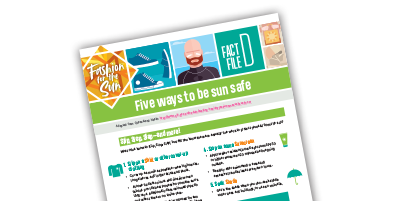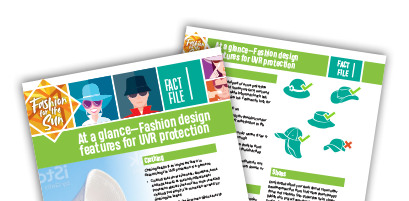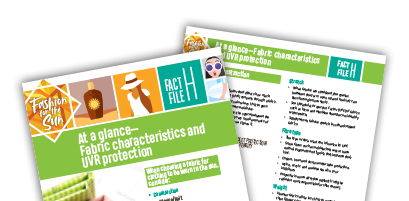
Skin cancer prevention
Be sun savvy and:

Sun-savvy fashion
Clothing
Clothing design is an important factor in determining the UVR protection of a garment:
Shirts and other tops
Tops should:
Skirts and shorts
For skirts and shorts, longer is better—preferably below the knee. The higher the hemline, the more skin is exposed to the sun’s UVR.
Fit
Loose clothing offers more protection than close-fitting clothes and is also more comfortable in hot weather.
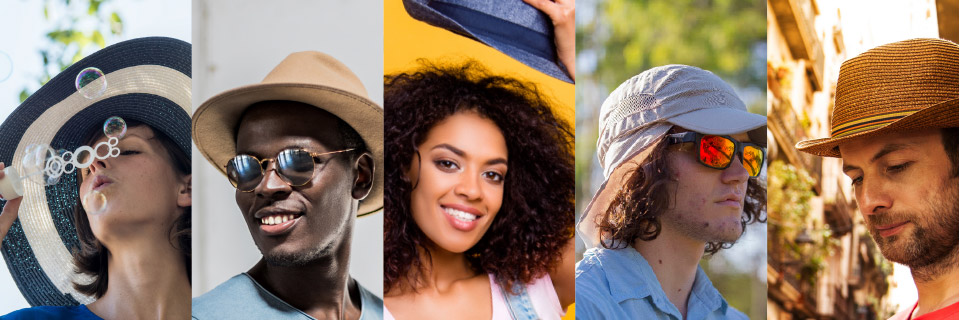
Hats
Hats are an essential part of a sun-savvy wardrobe and should shade your face, ears and neck—for example, a wide-brimmed slouch hat, bucket hat or legionnaire hat. Features to look for include:
Caps, sun visors and narrow-brimmed hats do not provide adequate protection for the ears, cheeks or neck.
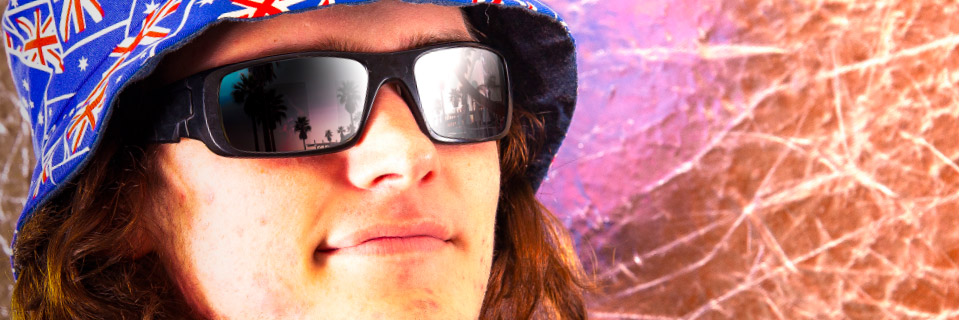
Sunglasses
The sun can also damage your eyes. Wear sunnies that meet Australian Standard AS1067 and fit your face—wraparound styles are the best. Look for:

Shoes
Don’t forget about your feet! Closed shoes offer greater protection from UVR more than strappy shoes and sandals. Sun-protective swim shoes (which also protect your feet from hot or rough surfaces) are available for wear in the pool or at the beach.
Other clothing and accessories
There are many other ways to enhance sun protection and complement clothing design. For example, sarongs and scarves can be used to provide additional skin coverage when outdoors.
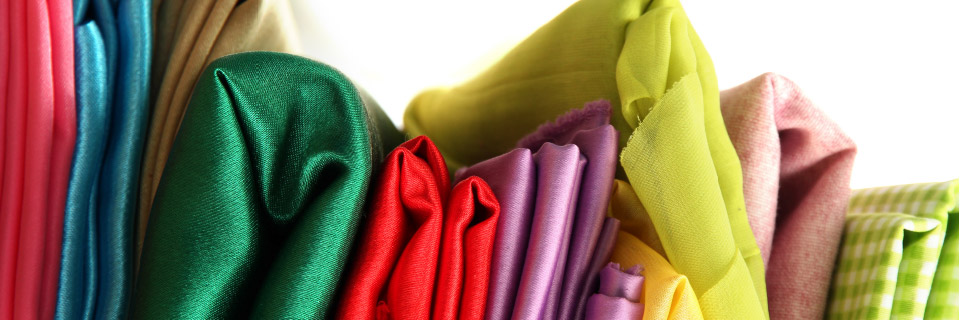
Sun-savvy fabrics
When choosing a fabric for clothing to be worn in the sun, consider:
Fabric construction
Weave
Figure 1. The variation of Ultraviolet Protection factor (UPF) with weave density
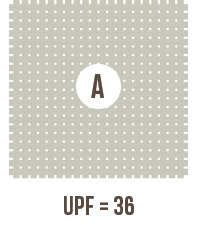

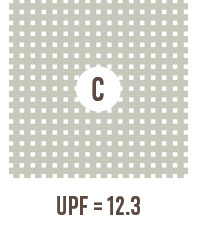

Stretch
Fibre type
Weight
Treatments
Colour
Table 1.
The effect of colour on the Ultraviolet Protection Factor (UPF) of cotton samples with identical weaves and weights
|
Colour |
UPF |
|
White |
12 |
|
Azure |
18 |
|
Royal |
27 |
|
Black |
32 |
|
Navy |
37 |
Finishing processes
Washing
Wet versus dry
Additives
UPF
The Ultraviolet Protection Factor (UPF) rating system was devised to give an indication of how well fabrics protect against Ultraviolet Radiation (UVR). Australia was the first country in the world to develop a standard for testing and labelling of sun-protective clothing (AS/NZS 4399: 1996). UPF ratings on clothing range from 15–50+.
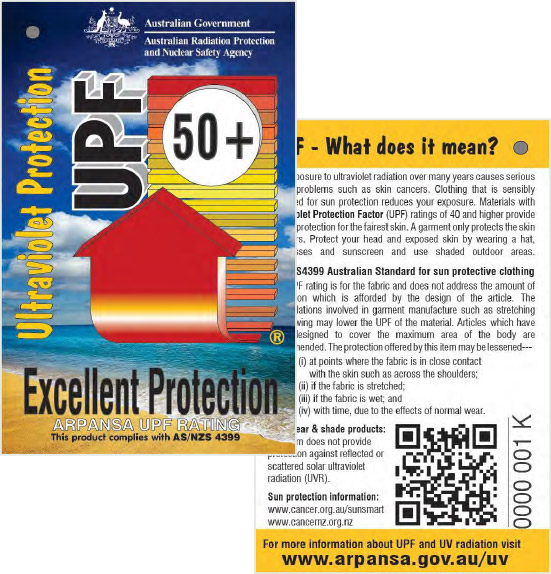
The table below outlines the UPF ratings assigned to various protection categories.
Ultraviolet Protection (UPF) categories in Australian Standard
(AS/NZS 4399: 1996)
|
Protection category |
Rating |
UPF Range |
|
Excellent protection |
40, 45, 50, 50+ |
40–50, 50+ |
|
Very good protection |
25, 30, 35 |
25–39 |
|
Good protection |
15, 20 |
15–24 |
A UPF rating of 15, for example, will reduce the amount of UVR passing through a fabric by a factor of 15. Another way of putting this is that only one‑fifteenth (1/15 or 7%) of UVR can pass through a fabric and onto the skin. A UPF of 50 means only one fiftieth (1/50 or 2%) of UVR can pass through.
The Australian and New Zealand Standard (AS/NZS 4399: 1996 Sun-protective clothing—Evaluation and classification) specifies claims that clothing manufacturers can and cannot make about the level of sun protection offered by their products.
Clothing that has undergone a number of scientific tests and has been found to provide significant protection against solar UVR may be labelled with a swing tag from the Australian Radiation Protection and Nuclear Safety Agency (ARPANSA, previously the Australian Radiation Laboratory) showing the garment’s UPF rating. The highest UPF rating for clothing is 50+.
Visit the ARPANSA website for further information about the UPF rating.



Resources
Establishing introductory knowledge
Resources for years 7/8
Resources for years 9/10
Resources for years 11/12
All resources
